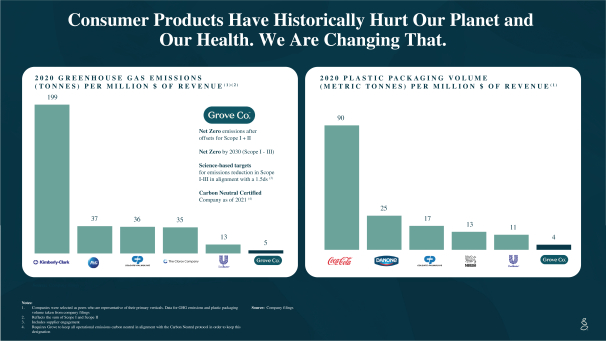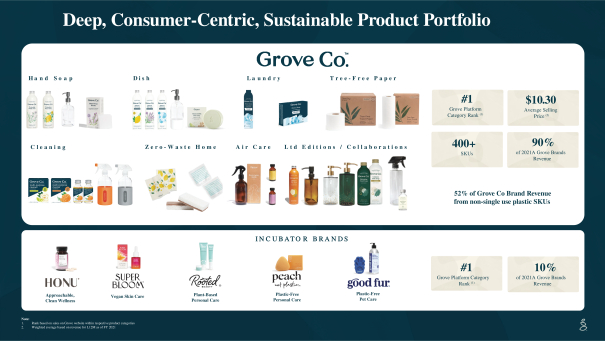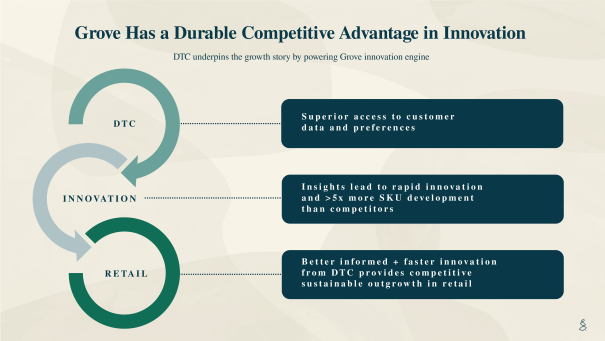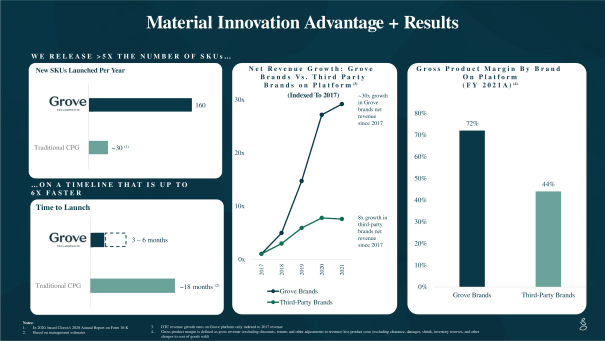As filed with the Securities and Exchange Commission on August
24,
2022 Registration No. 333-266205
UNITED STATES
SECURITIES AND EXCHANGE COMMISSION
Washington, D.C. 20549
Amendment
No
. 1 to
FORM
REGISTRATION STATEMENT
UNDER
THE SECURITIES ACT OF 1933
(Exact Name of Registrant as Specified in Its Charter)
Delaware |
5961 |
88-2840659 | ||
(State or Other Jurisdiction of Incorporation or Organization) |
(Primary Standard Industrial Classification Code Number) |
(I.R.S. Employer Identification No.) |
1301 Sansome Street
San Francisco, California 94111
(800)
231-8527
(Address, Including Zip Code, and Telephone Number, Including Area Code, of Registrant’s Principal Executive Offices)
Delida Costin
Chief Legal & People Officer
1301 Sansome Street
San Francisco, California 94111
(800)
231-8527
(Name, Address, Including Zip Code, and Telephone Number, Including Area Code, of Agent for Service)
Copies to:
Martin A. Wellington
Carlton Fleming
Sidley Austin LLP
1001 Page Mill Road Building 1
Palo Alto, California 94304
Tel: (650)
565-7100
Approximate date of commencement of proposed sale to the public:
If any of the securities being registered on this Form are to be offered on a delayed or continuous basis pursuant to Rule 415 under the Securities Act of 1933, please check the following box. ☒
If this Form is filed to register additional securities for an offering pursuant to Rule 462(b) under the Securities Act, please check the following box and list the Securities Act registration statement number of the earlier effective registration statement for the same offering. ☐
If this Form is a post-effective amendment filed pursuant to Rule 462(c) under the Securities Act, check the following box and list the Securities Act registration statement number of the earlier effective registration statement for the same offering. ☐
If this Form is a post-effective amendment filed pursuant to Rule 462(d) under the Securities Act, check the following box and list the Securities Act registration statement number of the earlier effective registration statement for the same offering. ☐
Indicate by check mark whether the registrant is a large accelerated filer, an accelerated filer, a
non-accelerated
filer, a smaller reporting company, or an emerging growth company. See the definitions of “large accelerated filer,” “accelerated filer,” “smaller reporting company” and “emerging growth company” in Rule 12b-2
under the Securities Exchange Act of 1934: Large accelerated filer |
☐ |
Accelerated filer |
☐ | |||
Non-accelerated filer |
☒ |
Smaller reporting company |
☒ | |||
Emerging growth company |
☒ | |||||
If an emerging growth company, indicate by check mark if the registrant has elected not to use the extended transition period for complying with any new or revised financial accounting standards provided pursuant to Section 7(a)(2)(B) of the Securities Act.
☐
The Registrant hereby amends this Registration Statement on such date or dates as may be necessary to delay its effective date until the Registrant shall file a further amendment which specifically states that this Registration Statement shall thereafter become effective in accordance with Section 8(a) of the Securities Act of 1933 or until the Registration Statement shall become effective on such date as the Commission, acting pursuant to said Section 8(a), may determine.
The information in this preliminary prospectus is not complete and may be changed. The Selling Holder may not sell these securities until the registration statement filed with the Securities and Exchange Commission is effective. This preliminary prospectus is not an offer to sell these securities and is not soliciting an offer to buy these securities in any jurisdiction where the offer or sale is not permitted.
PRELIMINARY PROSPECTUS
SUBJECT TO COMPLETION — DATED AUGUST
24,
2022 
Up to 32,557,664 Shares of Class A Common Stock
This prospectus relates to the resale from time to time of up to 32,557,664 shares of Class A Common Stock, par value $0.0001 per share (the “Class A Common Stock”), of Grove Collaborative Holdings, Inc., a Delaware corporation (“Grove Collaborative” or the “Company”), by YA II PN, LTD., a Cayman Islands exempt limited partnership (the “Selling Holder”). The shares included in this prospectus consist of shares of Class A Common Stock that we have issued or that we may, in our discretion, elect to issue and sell to the Selling Holder, from time to time after the date of this prospectus, pursuant to a standby equity purchase agreement we entered into with the Selling Holder on July 18, 2022 (the “Purchase Agreement”), in which the Selling Holder has committed to purchase from us, at our direction, up to $100,000,000 of our Class A Common Stock, subject to terms and conditions specified in the Purchase Agreement. See the section of this prospectus entitled “Committed Equity Financing” for a description of the Purchase Agreement and the section entitled “Selling Holder” for additional information regarding the Selling Holder.
Our registration of the securities covered by this prospectus does not mean that the Selling Holder will offer or sell any of the shares of Class A Common Stock. The Selling Holder may offer, sell, or distribute all or a portion of its shares of Class A Common Stock publicly or through private transactions at prevailing market prices or at negotiated prices. We will not receive any proceeds from the sale of shares of Class A Common Stock by the Selling Holder pursuant to this prospectus. However, we may receive up to $100,000,000 in aggregate gross proceeds from sales of our Class A Common Stock to the Selling Holder that we may, in our discretion, elect to make, from time to time after the date of this prospectus, pursuant to the Purchase Agreement. We provide more information about how the Selling Holder may sell or otherwise dispose of the shares of our Class A Common Stock in the section entitled “Plan of Distribution.” We will bear all costs, expenses, and fees in connection with the registration of the shares of Class A Common Stock offered hereby. The Selling Holder will bear all commissions and discounts, if any, attributable to its sales of the shares of Class A Common Stock offered hereby.
The Selling Holder is an “underwriter” within the meaning of Section 2(a)(11) of the U.S. Securities Act of 1933, as amended (the “Securities Act”), and any profits on the sales of shares of our Class A Common Stock by the Selling Holder and any discounts, commissions, or concessions received by the Selling Holder are deemed to be underwriting discounts and commissions under the Securities Act.
Our shares of Class A Common Stock are listed on The New York Stock Exchange (the “NYSE”) under the symbol “GROV.” On August 23, 2022, the closing sale price of our Class A Common Stock was $5.20 per share.
The Class A Common Stock being offered for resale in this prospectus (the “Resale Securities”) represent a substantial percentage of the total outstanding shares of our Class A Common Stock as of the date of this prospectus. Assuming the issuance of all of the Resale Securities to the Selling Holder under the Purchase Agreement, the Resale Securities would represent approximately 45.8% of the then-outstanding Class A Common Stock (assuming the Class A Common Stock issuable upon the achievement of certain stock price thresholds pursuant to the Business Combination (as defined in this prospectus) are not outstanding, or 43.1% assuming they are outstanding). The sale of all of the Resale Securities, or the perception that these sales could occur, could result in a significant decline in the public trading price of our Class A Common Stock. In addition to the Selling Holder, certain other shareholders, including the PIPE Investors, the Sponsor, the Backstop Investor and Legacy Grove equityholders (each as defined below and collectively, the “Additional Sellers”) may sell a substantial number of our securities pursuant to a separate resale prospectus (the “Additional Prospectus”). The sale of the Resale Securities together with the sale of the securities held by the Additional Sellers, or the perception that these sales could occur, could depress the market price of our securities.
We are an “emerging growth company” under federal securities laws and are subject to reduced public company reporting requirements. Investing in our Class A Common Stock involves a high degree of risk. See the section entitled “
” beginning on page 8 of this prospectus to read about factors you should consider before buying our securities.
Neither the Securities and Exchange Commission nor any state securities commission has approved or disapproved of these securities or determined if this prospectus is truthful or complete. Any representation to the contrary is a criminal offense.
The date of this prospectus is , 2022.
TABLE OF CONTENTS
Page |
||||
v |
||||
1 |
||||
8 |
||||
47 |
||||
52 |
||||
53 |
||||
54 |
||||
80 |
||||
103 |
||||
108 |
||||
114 |
||||
120 |
||||
125 |
||||
127 |
||||
141 |
||||
142 |
||||
145 |
||||
146 |
||||
147 |
||||
148 |
||||
F-1 |
||||
You should rely only on the information provided in this prospectus or any amendment or supplement to this prospectus. Neither we nor the Selling Holder have authorized anyone to provide you with different information. Neither we nor the Selling Holder are making an offer of these securities in any jurisdiction where the offer is not permitted. The information in this prospectus or any amendment or supplement to this prospectus is accurate only as of its date, regardless of the time of delivery of this prospectus or any amendment or supplement to this prospectus, as applicable, or any sale of the securities offered by this prospectus. Our business, financial condition, results of operations, and prospects may have changed since that date.
For investors outside the United States
i
ABOUT THIS PROSPECTUS
This prospectus and any accompanying prospectus supplement is part of a registration statement on Form
S-1
that we filed with the Securities and Exchange Commission using the “shelf” registration process. Under the shelf registration process, the Selling Holder may, from time to time, sell the Class A Common Stock offered by it described in this prospectus through any means described in the section titled “Plan of Distribution.” We will not receive any proceeds from the sale by such Selling Holder of the Class A Common Stock offered by the Selling Holder described in this prospectus. More specific terms of any Class A Common Stock that the Selling Holder and its permitted transferees offer and sell may be provided in a prospectus supplement that describes, among other things, the specific amounts and prices of the Class A Common Stock being offered and the terms of the offering. Neither we nor the Selling Holder have authorized anyone to provide you with any information or to make any representations other than those contained in this prospectus or any applicable prospectus supplement or any free writing prospectuses prepared by or on behalf of us or to which we have referred you. Neither we nor the Selling Holder take responsibility for and can provide no assurance as to the reliability of, any other information that others may give you. Neither we nor the Selling Holder will make an offer to sell these securities in any jurisdiction where the offer or sale is not permitted.
We may also provide a prospectus supplement or post-effective amendment to the registration statement to add information to, or update or change information contained in, this prospectus. Any statement contained in this prospectus will be deemed to be modified or superseded for purposes of this prospectus to the extent that a statement contained in such prospectus supplement or post-effective amendment modifies or supersedes such statement. Any statement so modified will be deemed to constitute a part of this prospectus only as so modified, and any statement so superseded will be deemed not to constitute a part of this prospectus. You should read both this prospectus and any applicable prospectus supplement or post-effective amendment to the registration statement together with the additional information to which we refer you in the section of this prospectus titled “Where You Can Find More Information.”
BASIS OF PRESENTATION
On June 16, 2022, as contemplated by the Agreement and Plan of Merger, dated as of December 7, 2021, as amended and restated on March 31, 2022 (the “Merger Agreement”), by and among Virgin Group Acquisition Corp. II, a Cayman Islands exempted company (“VGAC II” or “Sponsor”), Treehouse Merger Sub, Inc., a Delaware corporation and a direct wholly owned subsidiary of VGAC II (“Merger Sub 1”), Treehouse Merger Sub II, LLC, a Delaware limited liability company and wholly owned direct subsidiary of VGAC II (“Merger Sub II”) and Grove Collaborative, Inc., a Delaware public benefit corporation (“Legacy Grove”), consummated the merger transactions contemplated by the Merger Agreement, whereby (i) Merger Sub I merged with and into Legacy Grove, the separate corporate existence of Merger Sub I ceased and Legacy Grove became the surviving corporation (the “Initial Surviving Corporation”) and a wholly owned subsidiary of VGAC II (the “Initial Merger”) and (ii) immediately following the Initial Merger, and as part of the same overall transaction as the Initial Merger, the Initial Surviving Corporation merged with and into Merger Sub II, the separate corporate existence of the Initial Surviving Corporation ceased, and Merger Sub II continued as the surviving company and a wholly-owned subsidiary of VGAC II (such transactions the “Merger” or the “Business Combination”). Immediately prior to the closing of the Merger (the “Closing” and such date of the Closing, the “Closing Date”), VGAC II changed its jurisdiction of incorporation from the Cayman Islands to the State of Delaware by deregistering as an exempted company in the Cayman Islands and domesticating and continuing as a public benefit corporation formed under the laws of the State of Delaware. In connection with the Business Combination, VGAC II changed its name to Grove Collaborative Holdings, Inc. (“Grove” or the “Company”).
ii
Unless the context indicates otherwise, references in this prospectus to the “Company,” “we,” “us,” “our,” and similar terms refer to Grove Collaborative Holdings, Inc., a Delaware public benefit corporation formerly known as Virgin Group Acquisition Corp. II, and its consolidated subsidiaries. References to “Virgin Group Acquisition Corp. II” or “VGAC II” refer to the Company prior to the consummation of the Domestication and the Merger (as defined herein). “Grove Collaborative, Inc.” refers to Grove Collaborative, Inc. prior to the Business Combination.
iii
MARKET AND INDUSTRY DATA
This prospectus includes, and any amendment or supplement to this prospectus may include, estimates regarding market and industry data and forecasts, which are based on our own estimates utilizing our management’s knowledge of and experience in, as well as information obtained from our subscribers, trade and business organizations, and other contacts in the market sectors in which we compete, and from statistical information obtained from publicly available information, industry publications and surveys, reports from government agencies, and reports by market research firms. We confirm that, where such information is reproduced herein, such information has been accurately reproduced and that, so far as we are aware and are able to ascertain from information published by publicly available sources and other publications, no facts have been omitted that would render the reproduced information inaccurate or misleading. Industry publications, reports, and other published data generally state that the information contained therein has been obtained from sources believed to be reliable, but we cannot assure you that the information contained in these reports, and therefore the information contained in this prospectus or any amendment or supplement to this prospectus that is derived therefrom, is accurate or complete. Our estimates of our market position may prove to be inaccurate because of the method by which we obtain some of the data for our estimates or because this information cannot always be verified with complete certainty due to the limits on the availability and reliability of raw data, the voluntary nature of the data gathering process, and other limitations and uncertainties. As a result, although we believe our sources are reliable, we have not independently verified the information and cannot guarantee its accuracy and completeness.
iv
CAUTIONARY NOTE REGARDING FORWARD-LOOKING STATEMENTS
This prospectus may contain forward-looking statements as defined by the Private Securities Litigation Reform Act of 1995. These statements are based on the beliefs and assumptions of management. Although the Company believes that its plans, intentions, and expectations reflected in or suggested by these forward-looking statements are reasonable, the Company cannot assure you that it will achieve or realize these plans, intentions, or expectations. Forward-looking statements are inherently subject to risks, uncertainties, and assumptions. Generally, statements that are not historical facts, including statements concerning the Company’s possible or assumed future actions, business strategies, events, or results of operations, are forward-looking statements. In some instances, these statements may be preceded by, followed by or include the words “believes,” “estimates,” “expects,” “projects,” “forecasts,” “may,” “will,” “should,” “seeks,” “plans,” “scheduled,” “anticipates” or “intends” or the negatives of these terms or variations of them or similar terminology.
Forward-looking statements are not guarantees of performance. You should not put undue reliance on these statements which speak only as of the date hereof. You should understand that the following important factors, among others, could affect the Company’s future results and could cause those results or other outcomes to differ materially from those expressed or implied in the Company’s forward-looking statements:
• |
competition and the ability of the business to grow and manage growth profitably; |
• |
expansion plans and opportunities, including future acquisitions or additional business combinations; |
• |
litigation, complaints, and/or adverse publicity; |
• |
the impact of changes in consumer spending patterns, consumer preferences, local, regional and national economic conditions, crime, weather, demographic trends, and employee availability; |
• |
privacy and data protection laws, privacy or data breaches, or the loss of data; |
• |
our financial and business performance following the Merger, including financial projections and business metrics; |
• |
changes in the market for the Company’s products, and expansion plans and opportunities; |
• |
anticipated customer retention by the Company; |
• |
the extent to which the Company is able to protect its intellectual property rights and not infringe on the intellectual property rights of others; |
• |
new or adverse regulatory developments relating to automatic renewal laws; |
• |
our use of proceeds from the sale of shares pursuant to the Purchase Agreement; and |
• |
the effect of COVID-19 on the foregoing, including its effect on the business and financial conditions of the Company. |
These and other factors that could cause actual results to differ from those implied by the forward-looking statements in this prospectus are more fully described in the “” section. The risks described in the “” section are not exhaustive. New risk factors emerge from time to time and it is not possible for us to predict all such risk factors, nor can the Company assess the impact of all such risk factors on its business or the extent to which any factor or combination of factors may cause actual results to differ materially from those contained in any forward-looking statements. All forward-looking statements attributable to the Company or persons acting on its behalf are expressly qualified in their entirety by the foregoing cautionary statements. The Company undertakes no obligations to update or revise publicly any forward-looking statements, whether as a result of new information, future events or otherwise, except as required by law.
Risk Factors
Risk Factors
v

















